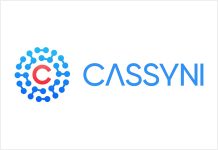
Clarivate Plc, a global leader in providing trusted information and insights to accelerate the pace of innovation, today released a new report from the company’s Institute for Scientific Information™ which proposes a new method for analyzing the credit authors of academic papers receive via citations.
Across the research landscape, receipt of credit via the citation of sources influences motivation and reputation. Credit for publishing academic research often affects employment, promotion and funding at the individual level, as well as funding and decision making for academic research institutions and nations.
In an increasingly global and collaborative world, where the number of articles naming dozens or even hundreds of researchers as authors is rapidly increasing, the need for informed, data-driven analysis on credit that works across research disciplines and regions is essential. However, existing methods for analyzing credit can become distorted by exceptionally high author counts.
Making it count: Research credit management in a collaborative world proposes a new indicator, the ‘Collaborative CNCI’ (Collab-CNCI) as one possible solution.
Jonathan Adams, Chief Scientist at the Institute for Scientific Information said: “This new indicator is a vital innovation for the 21st Century, as international collaboration becomes a dominant feature of global research. In studying existing and innovative analytical methods we aim to help the global research community deliver more, better research, and we believe that improving the system of credit with an indicator such as Collab-CNCI would help accurately acknowledge research achievement and excellence- to accelerate the pace of innovation.”
The report not only confirms that highly collaborative papers can distort summary results at a national and institutional level – but also shows how that happens. It highlights key aspects of achievement and shows where institutions generate significant academic credit from citations to their more domestic papers.
Collab-CNCI complements the already existing Category Normalized Citation Impact indicator created by CWTS at Leiden University. But the accumulated citation count for each paper is normalized against other papers of the same publication year, the same subject category, the same document type and – critically – the same collaboration type.
Ludo Waltman, Professor of Quantitative Science Studies at the Centre for Science and Technology Studies (CWTS), Leiden University said: “The increasing level of collaboration in global science raises challenging questions concerning the design and interpretation of bibliometric indicators. Developing a better understanding of the complex interplay between scientific collaboration and citation impact is absolutely essential. I welcome the contribution from the Institute for Scientific Information, part of Clarivate to address this difficult issue.”
The Institute for Scientific Information invites research users and managers to comment on the relative benefits of the Collab-CNCI in comparison and as a complement to other methods for enabling balanced and timely decisions at the individual, institutional and national levels. Please send all feedback to ISI@clarivate.com.





























